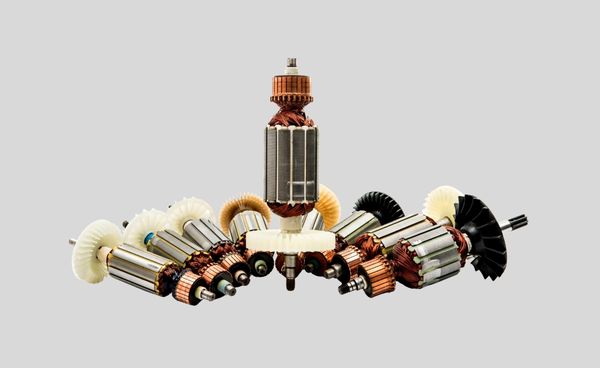5 Symptoms Of Failing Electric Motor Rotor
Motors are used everywhere in industrial environments and they are becoming increasingly complex and technical, sometimes making it a challenge to keep them running at peak performance. Use this quick guide to respond quickly and confidently when any electric motor rotor goes down.
1. Open rotor bars:
Open rotor bars or end rings are usually necessitated. They can be repaired, recast (if it’s economical). It’s important to know that any replaced metal must be identical to the original one.
The following symptoms may indicate that the rotor bar is open
- If too many rotor bars are open, a loaded motor will draw amperes high enough to open its protection device like MCB/ Overload relay.
- The motor takes a very low current in no load condition.
- The motor starts very slowly.
- Motor rotates at a very lower speed than its rated speed.

2. Open end rings:
Open-end rings cause uneven torque and some power loss. A ring with one open spot will soon develop more open spots. Each time the open spot crosses a 90° spot between poles, the current will double in the ring area between the next two poles.
Cause of open/ cracked end ring includes following
- Flawed casting
- Motor burnt out due to overload
- Mechanical damage
- Vibration
A bubble or void in an end ring can cause an electrical vibration. This type of vibration can’t be corrected by balancing. It can be detected by the turning off motor and checked when rotating. Electrically mused vibrations will always cease as soon as the power is shut off.
3. Misalignment Rotor/ Stator Iron :
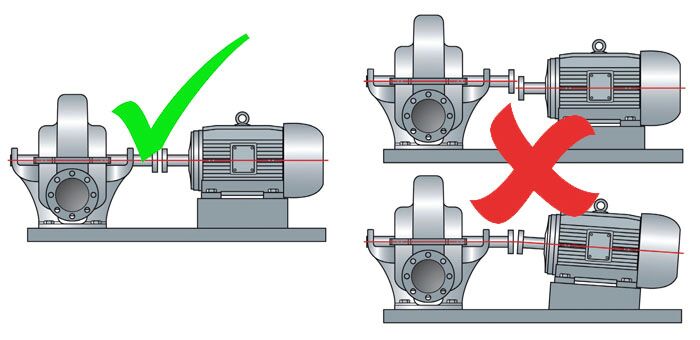
A motor with a misaligned rotor will draw high amperes and will lose power. The magnetic path becomes distorted, causing the magnetizing amperes to increase. The stator winding’s will partially burnt and resemble an overload burnout.
Possible causes of a misaligned rotor include:
- Wrong bearing shim placement
- Bearings not installed correctly on the shaft
- Wrong bearing width
- Captive bearing not held as originally placed
- End bells interchanged
- Stator core shifted on its shell
- A rotor shifted on its shaft
- A rotor replaced with a shorter rotor
A rotor with the same diameter but longer than the original will work, but with reduced efficiency.
4. Rotor dragging on stator:

If the rotor drags on the stator and the bearings aren’t worn. The process increases the air gap, which increases the no-load amperes. The increased amperes are similar to a misaligned rotor and stator iron. The magnetic circuit is degraded, so it takes more amperes to magnetize the motor’s iron.
The motor will run hotter than normal because the motor is drawing more magnetizing amperes. If the load is at maximum or there are any adverse conditions (such as low voltage or frequent starts), the motor should be replaced. There will be some permanent power and efficiency loss.
5. Rotor loose on the shaft:
A loose rotor on a shaft makes a rumbling or vibrating sound. The sound will cease after the power is turned off (while the motor is coasting). If the motor has operated this way for very long, a speck of red dust will form between the shaft and rotor iron. This dust is oxidized iron, caused by the rubbing action between the shaft and the rotor. The same thing happens when a pulley or bearing is loose on a shaft.
The decision to repair a loose rotor depends on the price of a replacement motor and the importance of the motor in the plant operation.
There are options for this problem:
- The rotor (and shaft) can be replaced.
- Rotor can be bored out and a new shaft can be replaced.
- A thin metal wedge can be driven between the shaft & rotor to secure it.
Wedging the rotor may offset it enough to make it drag on the stator. It would then be necessary to skim the rotor on a lathe to keep it from dragging. The rotor should be bored and fitted with a new shaft. In most cases, it is more economical to replace the motor.
- How do you troubleshoot 3 phase AC motor?
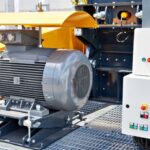 The table presented below provides a comprehensive insight into the frequently encountered issues that afflict 3-phase…
The table presented below provides a comprehensive insight into the frequently encountered issues that afflict 3-phase… - Types of losses in Induction Motor
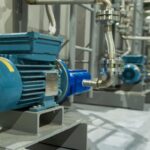 The losses in induction motor are broadly categorized into two classes, namely constant losses and variable…
The losses in induction motor are broadly categorized into two classes, namely constant losses and variable… - 5 Symptoms Of Failing Electric Motor Rotor
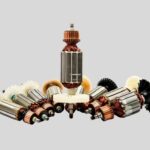 Motors are used everywhere in industrial environments and they are becoming increasingly complex and technical, sometimes…
Motors are used everywhere in industrial environments and they are becoming increasingly complex and technical, sometimes… - Comparison between servo motor vs induction motor
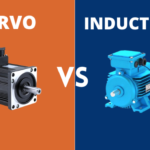 The Technological lines separating induction motors from servo motors are beginning blur at many point’s. An induction…
The Technological lines separating induction motors from servo motors are beginning blur at many point’s. An induction… - Comparison between Electromagnetic Flowmeter and Ultrasonic Flowmeter
 Water and wastewater Expert depends on accurate flow measurements for process operation . Selecting the right…
Water and wastewater Expert depends on accurate flow measurements for process operation . Selecting the right… - How do IP protection ratings work?
 How do Ingress Protection ratings (IP) work? IP Protection ratings are based on two numbered codes…
How do Ingress Protection ratings (IP) work? IP Protection ratings are based on two numbered codes…

